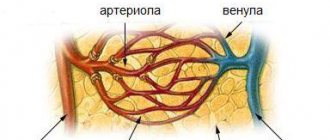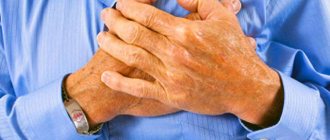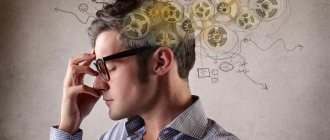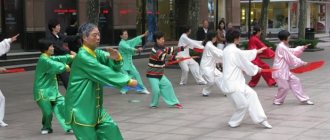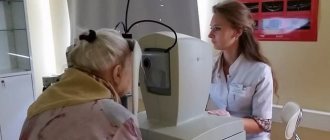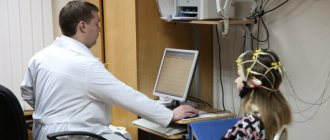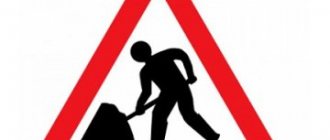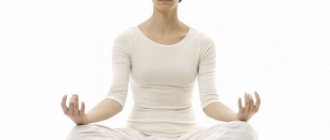Vascular dystonia is a common blood circulation disorder, the causes of which may be related to both genetic predisposition and external factors. Stress, lack of physical activity, smoking, consequences of past illnesses - all this leads to the fact that the blood vessels are in increased tone. The narrowing of the lumen leads to impaired blood supply and increased blood pressure, especially if there is a diagnosis of “neurocirculatory dystonia,” which significantly aggravates the course of these processes. It is not so much pharmaceutical drugs that can help restore proper blood circulation, but an active lifestyle and simple exercises for blood vessels.
Small capillary training
A network of capillaries is located throughout the body. These are the smallest vessels that deliver arterial blood directly to the skin or internal organs, and then produce an outflow of waste products through the venous bed. If capillary blood circulation deteriorates in any area, toxins and other harmful substances accumulate, this leads to disruptions in the functioning of internal organs and systems.
The founder of the training system for the capillary network is Katsuzo Nishi. He developed a simple technique that will keep the capillary walls toned and stimulate the removal of toxins from the body.
- The “Vibration” exercise is performed while lying on your back. It is recommended to perform it in the morning without getting out of bed. You just need to raise your arms and legs up and shake them vigorously for several minutes. In addition to improving the condition of the capillaries, there is an intensive outflow of lymph. This will remove toxins and get rid of morning puffiness.
- The next exercise is called “Goldfish”. It is also performed lying on your back. Your hands should be placed behind your head, at neck level, and your toes should be pulled towards your shins. Next, you need to tense your muscles and vibrate your whole body, like a swimming fish. Such movements relax the cervical nerves and improve blood circulation in small vessels.
IMPORTANT! Training for capillaries takes no more than 5 minutes. It is worth performing the complex twice a day: in the morning, immediately after waking up, and before going to bed.
It is recommended to start every morning with exercises Niches for capillaries
First signs of dementia
- Both long-term and short-term memory are impaired. It becomes difficult for a person to remember events that happened recently or remember new information.
- A person loses the skills of orientation in space and time. It is not uncommon for patients to become lost even in areas familiar to them.
- Indifference to once-loved activities appears, and the desire to learn new things disappears. This happens because the brain is no longer able to receive and process information.
- Reducing the criticality of one's own perception. Usually this symptom appears when planning the next period of life.
- In the future, both the progression of these symptoms and the appearance of others, more powerful in their effects, are noted. One of the clear hallmarks of dementia is that a person lives in his past.
At the earliest manifestations of the disease, it is important to promptly consult a therapist or general practitioner. If necessary, he will refer the patient to a specialist (neurologist, psychiatrist or geriatrician).
Exercise for cerebral vasospasm
Blood supply to the brain occurs through the coronary vessels. They run along the cervical spine and then supply oxygen and nutrients to nerve cells. Their spasms can be a consequence of neck tension during the day, as well as osteochondrosis, vertebral displacement and other dangerous pathologies.
Dystonia and spasm of cerebral vessels can be identified by the following symptoms:
- acute headache, increased or decreased intracranial pressure;
- sudden nausea, deterioration of coordination of movements;
- memory loss, tinnitus;
- decreased performance.
A sedentary lifestyle provokes a deterioration in well-being. It is worth paying attention to physical activity every day, especially for those who spend a lot of time in a sitting position. Simple tilts and turns of the head are also useful. They should be smooth and not cause discomfort.
Gymnastics for cerebral vessels is simple and easy to perform at home or at work. Each exercise is repeated for several minutes:
- in a standing position, rotate your head clockwise and counterclockwise;
- cross the fingers of your right and left hands, raise your hands above your head and lower them to the ground (“chopping wood”);
- alternately with the right foot to the left hand and vice versa;
- in a standing position, rotate your arms in the shoulder joints (first in one direction, then in different directions - left arm forward, right arm back and vice versa);
- exercise “birch tree” - in a lying position, raise your straightened legs up, supporting your lower back with your hands.
ADVICE! Cerebral vasospasm can be prevented by regular exercise. Active walking, running or dancing stimulates blood circulation, strengthens blood vessels and prevents many dangerous pathologies of the cardiovascular system.
Leg workout
The most common vascular disease of the lower extremities is varicose veins. It develops as a result of a decrease in the tone of the vascular walls, which is why pathological cavities appear on them. Venous blood stagnates in them, which is accompanied by inflammation and swelling of the legs. Varicose veins occur especially often in middle-aged and older women, as well as in overweight patients. This factor leads to a constant increased load on the distal parts of the limbs and to difficulties in their blood supply.
In everyday life, the vessels of the lower extremities bear a lot of load, so it is important to train them
Daily strengthening of the muscles and blood vessels of the legs will help to avoid problems, including in old age. A simple set of exercises was created specifically for those who want to take care of their health and strengthen the vascular walls in advance:
- in a standing position (legs should be slightly wider than shoulders), slowly lower down and touch the ground with your hands;
- sitting on the floor, spread your legs as wide as possible, try to touch the ground with your arms or shoulders folded on your chest;
- walking on your knees.
If there are no contraindications, it is useful to go for a run every day. This sport strengthens all the muscles of the body, helps control weight, increases the respiratory volume of the lungs and activates blood circulation. However, running is contraindicated under the following conditions:
- chronic diseases of the joints of the lower extremities (arthritis, arthrosis);
- injuries;
- low or high blood pressure.
A good alternative to running is swimming. In water, the load on the joints is less, and the muscles work just as intensely. In addition, during water sports, blood circulation in the distal extremities increases. In everyday life, blood reaches the hands and feet last.
What is dementia
With the development of dementia, a person’s mental abilities decrease, existing knowledge and skills are gradually lost, and the ability to learn is lost.
Thinking, orientation, understanding, counting, learning, language and judgment are impaired. There are many reasons why dementia develops. Dementia can be triggered by endocrine and vascular pathologies, depression, certain infections, traumatic brain injuries, brain tumors, alcoholism and drug addiction. Additional risk factors for developing dementia include:
- heredity. Moreover, the risk increases if the pathology in close relatives developed before the age of 65 years;
- obesity;
- lack of active intellectual activity.
Strengthening the arteries and veins of the neck
The cervical spine is the most mobile. Here pass important nerves and vessels that carry blood to the brain. If the muscular frame is weakened, a person has to make an effort to maintain his posture. As a result, muscle and vascular spasms occur, which cause headaches, migraines, and surges in intracranial pressure.
A simple set of exercises for the muscles of the cervical spine has a positive effect on the condition of the blood vessels in this area. It can be performed at home, in the workplace and even on the road. It is based on the principles of Chinese gymnastics, gentle stretching and relaxation of the deep neck muscles. The movements are performed very slowly, while breathing should be even and deep.
- The first exercise is to lean your back against the wall, strain your neck as much as possible and press against the surface, holding your breath for 5-10 seconds. Then, as you exhale, relax and do several repetitions.
- Sitting on a chair, place your forehead on your palms. They apply pressure with their hands, trying to move the head back, while it remains in the same position. The exercise lasts up to 10-15 seconds, and it is recommended to hold your breath. Do 5-10 repetitions in total.
- Similar exercises are repeated, only the palms should be placed on the back of the head or on the sides of the head.
- The last exercise, which can only be performed on well-warmed muscles, is deep turns of the head to the sides in a semicircle. At the extreme points, you need to linger and slowly try to stretch the muscles.
ADVICE! Neck exercises are especially useful for sedentary work. If you perform one exercise every hour during the day, the condition of your blood vessels will noticeably improve.
Neck exercises can also be done at your workplace.
Main areas of study
The techniques of Chinese gymnastics are quite simple and accessible to everyone. To achieve a good result, it is important not only to do the exercises correctly, but also to find inner harmony.
Attention! During the training period it is necessary to exclude alcohol and nicotine! A healthy diet and proper daily routine are also important.
Basic rules of Qigong:
- Gradual increase in loads;
- Physical exercise should be done daily;
- There should be no feeling of fatigue;
- Heart rate should not be more than 120 beats/min;
- You can’t exercise if a person feels bad;
- Do not practice if you have heart pain without the permission of your doctor;
- Perform exercises on an empty stomach.
Exercises for the heart
The heart is an organ that works constantly. His condition may worsen with age, as well as with increased workload. Weakness of the heart muscle is often observed in overweight patients with concomitant pathologies. The only way to keep it in good shape even in old age is to train regularly.
Exercises can be started as morning exercises, immediately after waking up. The simplest of them, which is suitable as a warm-up, is rotation of the hands and feet. Such movements accelerate blood flow in the distal parts of the extremities, dilate blood vessels and stimulate the heart. Next, you can proceed to the main set of exercises for blood vessels and the heart.
- To begin with, you can rise high on your toes and walk with your knees high. This exercise activates blood circulation in the lower extremities.
- Starting position: standing, feet wider than shoulder width. The hands are on the belt, and the body must perform smooth deep bends.
- In a standing position, spread your arms as wide as possible to the sides. Next, the palm of the right hand touches the left shoulder and, conversely, gradually increasing the speed. You can do up to 50 repetitions in one approach.
- Another useful exercise is circular rotation of the arms in the shoulder joints. With both hands, make a full circle at the same time, first in the forward direction, then backward.
- While lying on your back (especially before going to bed), do the “bicycle” and “scissors” exercises.
IMPORTANT! Heart exercises don't have to be fast and intense. In the absence of pathologies, you can gradually increase the load by adding running and other cardio exercises.
Breathing exercises
Breathing exercises are the basis for many yoga asanas and other, more modern complexes. There is a wide variety of breathing patterns, but they are all based on basic principles:
- slowly filling the lungs with oxygen through the nose and exiting through the mouth;
- diaphragmatic breathing;
- alternating thoracic and abdominal types of breathing.
Proper breathing is important not only during training, but also in everyday life. If you learn to control yourself and breathe slowly and deeply, the degree of saturation of cells with oxygen increases noticeably.
Slow and deep breathing is a prerequisite for proper performance of all exercises.
Recovery after a heart attack or stroke
After damage to the heart muscle, a long period of rehabilitation is required. A prerequisite is exercise therapy - physical therapy, which is prescribed by a specialist. These will be smooth bends and turns of the body, walking in place and long walks. If you do not pay attention to physical activity, the heart muscle will not receive enough oxygen and nutrients for full recovery.
IMPORTANT! After myocardial damage, the intensity of exercise should be monitored. During gymnastics, the pulse should remain within 120 beats per minute.
Exercises for the heart and blood vessels are a mandatory way to prevent many diseases. Without physical activity, blood volume decreases, arteries and veins lose elasticity, and movement through the capillaries slows down. It is important to take care of the condition of the cardiovascular system as early as possible so that they remain healthy in old age.
How to delay the aging of the body
Why are we turning to Chinese practices again? Because the Chinese have been testing healing methods for centuries, proving that they really work.
No one will argue that the health of the entire body depends on the state of the cardiovascular system, because the blood pumped by our “pump” supplies the organs with oxygen and vital energy (Qi). To keep your heart pumping blood well, you need to do simple exercises every day.
Try doing 8 exercises for at least three days, and you will immediately notice an improvement in your condition. When your body feels that it has gotten better, you will never stop doing Chinese gymnastics.
Those who are already practicing note how inflammatory processes are gradually eliminated, chronic diseases go away, energy appears, and performance increases.
In addition, you have:
- the elasticity of blood vessels will improve;
- blood clots will not form, varicose veins will decrease;
- blood pressure will return to normal;
- anxiety, excessive excitability and fears will disappear;
- heart function stabilizes;
- dizziness will disappear;
- memory and attention will improve.
